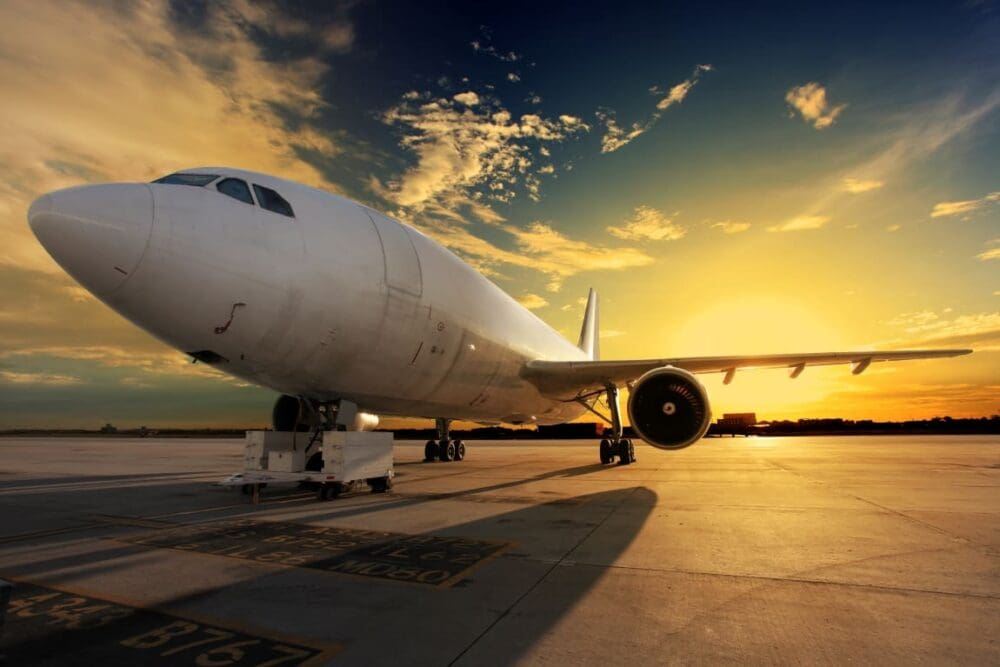By Transport & Environment (T&E)
A new study by green group Transport & Environment (T&E) suggests that thousands of cases of high blood pressure, diabetes and dementia across Europe could be linked to the tiny particles emitted by planes.
52 million people – more than 10% of Europe’s total population – live within a 20km radius from the 32 busiest airports in Europe and are particularly exposed to ultrafine particles from aviation, new research by CE Delft and commissioned by T&E finds. In Paris, one of the cities included in the study, 8 million people are affected by its two main airports Charles de Gaulle and Orly. The exposure to ultrafine particles can be linked to the development of serious and long-term health conditions, including respiratory problems, cardiovascular effects and pregnancy issues.

Exposure to ultrafine particles may be associated with 280,000 cases of high blood pressure, 330,000 cases of diabetes, and 18,000 cases of dementia in Europe, according to the new research. The study extrapolated reported cases of these illnesses around Amsterdam Schiphol airport and gives the first ever estimate of health effects linked to aviation-related UFPs in Europe.
Ultrafine particles are particularly concerning because they penetrate deeply into the human body and have been found in the blood, brain and placenta. UFPs are below the size of 100 nanometres in diameter – approximately 1,000 times smaller than a human hair. To date, there is no regulation on safe levels of UFPs in the air, even though the WHO warned it was a pollutant of emerging concern over 15 years ago.
UFPs from planes are emitted at high altitude but also at take-off and landing meaning residents living near airports are particularly affected. People living in a 5km radius from an airport breathe in air that contains, on average, anything from 3,000 to 10,000 ultrafine particles per cm3 emitted by aircraft. In many cities, a correlation exists between people living near an airport and lower incomes. This shows once again that the most vulnerable in society are most affected by air pollution.
Jemima Hartshorn, founder of Mums for Lungs, a UK-based campaign group on air pollution, “First we had the problem of air pollution from roads, then we had wood burning stoves, and now we are becoming aware of another invisible danger affecting everyone’s health. We know that air pollution is the biggest public health crisis and particularly affects children, babies and older people. These tiny particles are known to penetrate every organ of the body, including the placenta. Most people have no choice over where airports are sited or how big they are, and often this pollution is being created by planes carrying passengers from all around the world”.
Using ‘better quality’ jet fuel, though, can reduce UFPs by up to 70%, the study finds. The amount of UFPs emitted from planes depends largely on the composition of the fuel. The cleaner the aviation fuel, the less pollution it generates when burnt. Cleaning this fuel happens through a process called hydrotreatment. It has been used for decades to remove sulphur from fuels for cars and ships fuels and could cost less than five cents per liter of fuel. But jet fuel standards for planes have never been improved, even though it can significantly reduce air pollution around airports.
Other measures to reduce UFPs and improve air quality include reducing air traffic and aviation’s exponential growth, as well as using cleaner technologies like sustainable aviation fuels (SAFs) and zero-emission aircraft that release much fewer pollutants.
“It’s not often that an alarming problem affecting millions of people can be reduced, and at a low cost. Dirty fumes caused by planes can be drastically reduced if we clean up the fuel. The sector prides itself with cutting-edge technology and so-called efficient planes, yet continues to use fuels which have a devastating impact on the health of millions of Europeans. It’s time for the EU to set jet fuel quality standards for the sake of the climate and people’s health”, Carlos Lopez de la Osa, aviation technical manager at T&E, concludes.
UFPs are part of the so-called “non-CO2 emissions” from planes, which include many other toxic pollutants, both gases and particles, such as nitrogen oxides and sulphur dioxide. Although these pollutants do not fall within the scope of the study, they also have known health effects that add to the ones previously described. These emissions also have a harmful effect on climate, making aviation’s contribution to global warming at least twice as bad as commonly thought. For example, the formation of contrails – the white lines criss-crossing the sky behind planes, with a significant warming effect – is also related to UFP emissions. Reducing UFP emissions through better quality jet fuel would not only be beneficial for the population living near airports, but also for the planet.
More information: CE Delft Study; T&E briefing: ‘Can living near an airport make you ill?’; T&E Press Release. Featured image credit: jcomp | Freepik




